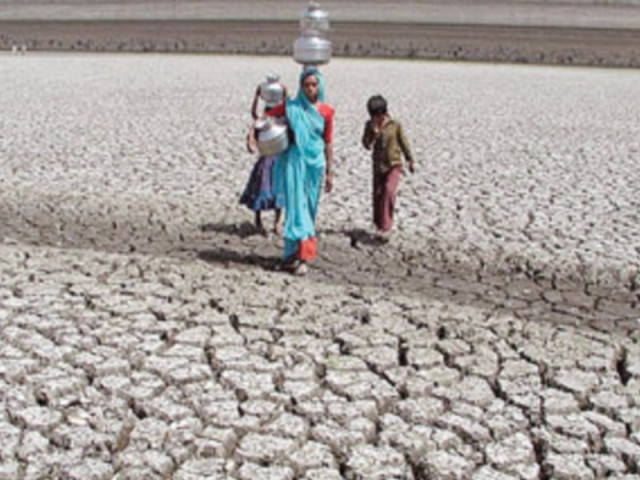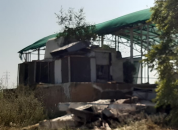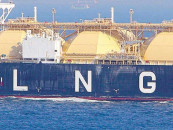Our life, our Sindhu River: ‘For Sindh to survive, shortage of water must be tackled’
Speakers at seminar say Sindh’s share of water has been given to other provinces.

Experts at a seminar on water shortage in Sindh highlighted the province’s economy was being ruined because of the issue and thus, creating problems for its people. PHOTO: FILE
This was stated by the former chairperson of the Technical Committee on Water Resources, AGN Abbasi, and irrigation system expert, Muhammad Idris Rajput, at the seminar, Our life: Our Sindhu River, organised by the Sindh Abhyas Academy SZABIST on Tuesday. Both the speakers were of the opinion that the government had never highlighted the issue of water distribution seriously.
“Sindh has been the main sufferer of water shortage. There is lack of honest implementation of the 1991 Water Accord while the issue has never been taken up in the Council of Common Interests,” said Abbasi.

He said that the Indus River System Authority and Sindh government were responsible for not addressing the issue.
While explaining the irrigation system, distribution pacts, challenges faced by Sindh [inter provincial and intra provincial], positions of dams in the country, flood situation and drainage system, Rajput said that the issue of water shortage can’t be resolved until and unless the provincial government pursues it seriously.
He said that the agriculture system depends on the Indus River. “In periods of failure of crops, the growers are dependent on livestock for their survival,” he said.
According to Abbasi, Sindh receives less water due to the current sharing arrangements and exemptions in sharing shortages given to Khyber-Pakhtunkhwa and Balochistan. Rajput said that Sindh gets less water in early Kharif [cotton season] when Mangla Reservoir is filled and due to operation of link canals from Indus River. “Indus Delta is suffering due to inadequate fresh water flow and less nutrient rich salt,” he briefed, adding that the storage of Tarbela Dam has reduced from 9.3 MAF to 6.62 MAF while Mangla Dam’s capacity reduced from 5.3 MAF to 4.495 MAF. “As a result, all water stored in Kharif is consumed in ensuing Rabi and there is no water for early Kharif.”
He suggested that surplus water from floods be stored and used to meet early Kharif shortages.
There are four options for dams - Katzara [Skardu] Dam, Diamer Basha Dam, Akhori Dam and Kalabagh Dam. The storage of Katzara Dam is 27 MAF while its power generation capacity could be 4,500 MW. Rajput said that the first one can’t be built due to three major reasons - Skardu’s population displacement issue, defence route and presence of its airport. The storage capacity of Basha Dam is 6.4 MAF and could generate 4,500 MW power. “It was announced on January 17, 2006 but there has been no progress. The Akhori Dam is uneconomical due to the lowest power generation capacity - 600MW - while its capacity is 6MAF. The Kalabagh Dam with 6.1 MAF capacity and 2,400 MW power generation facility is controversial as many already know,” he explained.
Speaking further on the Kalabagh Dam, he said that since it is situated in Punjab, its water could be used during shortage years through the canal system. He said that was the last potential site for a dam on the Indus River and controls flows of Kabul, Soan and Harrow hill torrents and Indus itself.
In support of Basha Dam, Rajput said that there was no potential of construction of any canal as it is surrounded by hills. “It only controls the Indus. There is no chance of manipulation and its power generation capacity is also satisfactory. Our demand is to construct Kalabagh after Basha Dam and canals from Kalabagh should be removed,” he maintained.
Ghazala Rahman Rafiq, the director of Sindh Abhyas Academy, concluded the seminar by saying, “The water issue is a matter of our life and death which is why it should be taken seriously.”
Published in The Express Tribune, September 18th, 2013.



















COMMENTS
Comments are moderated and generally will be posted if they are on-topic and not abusive.
For more information, please see our Comments FAQ